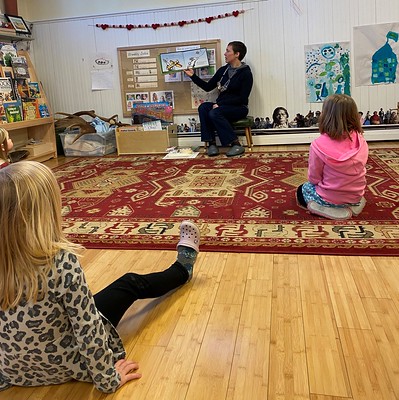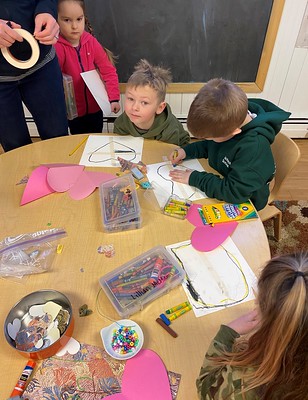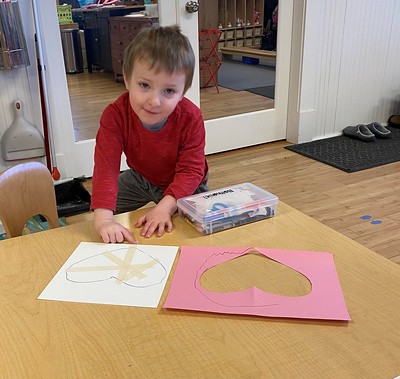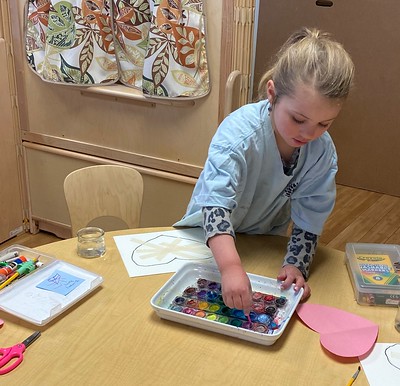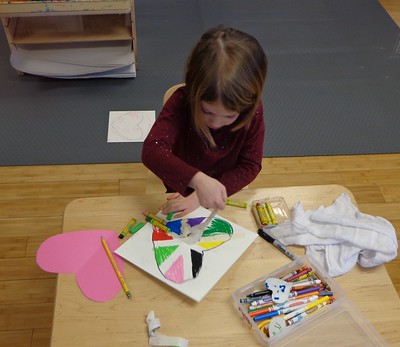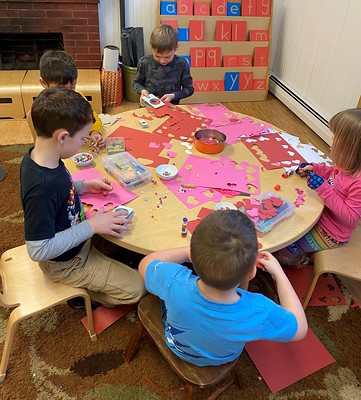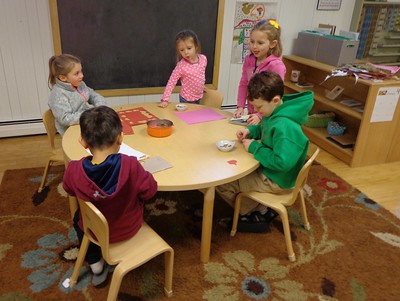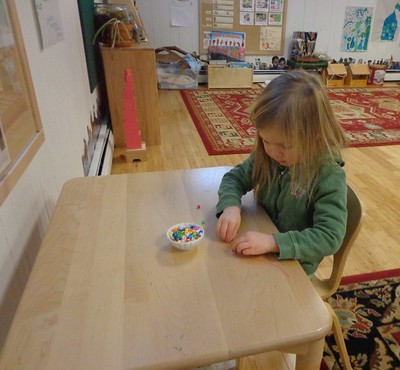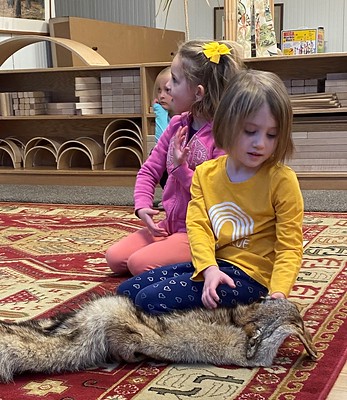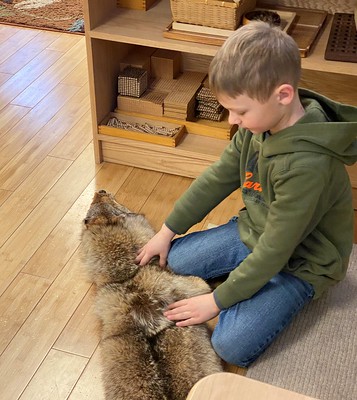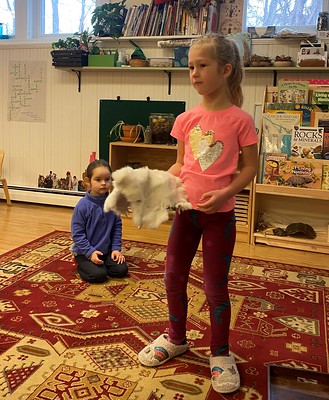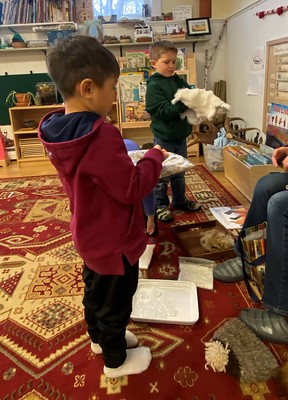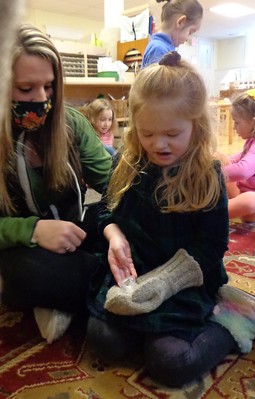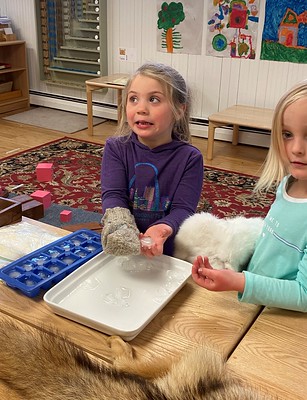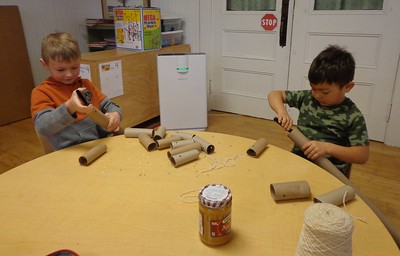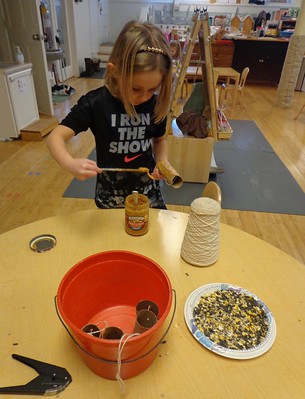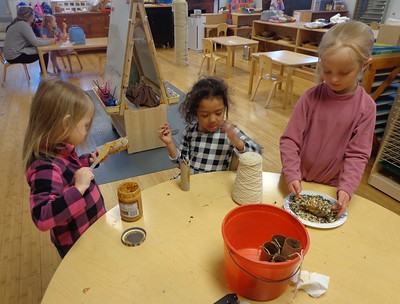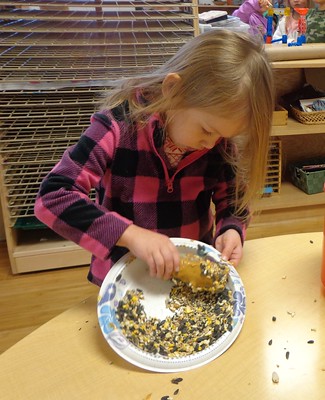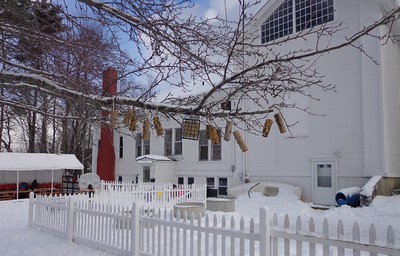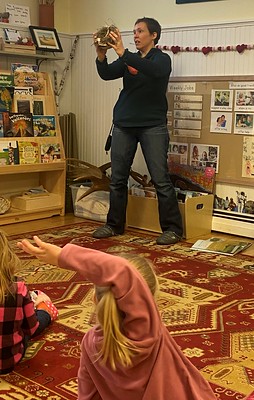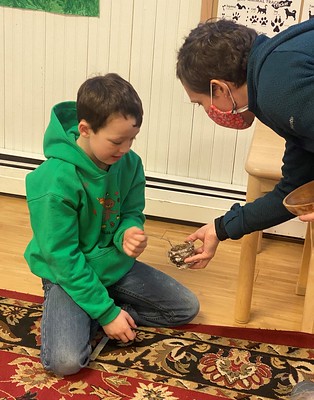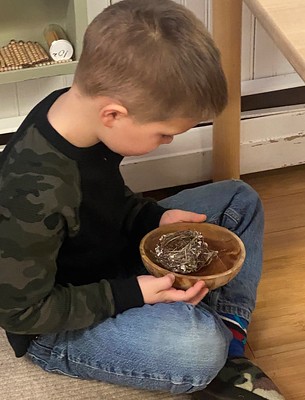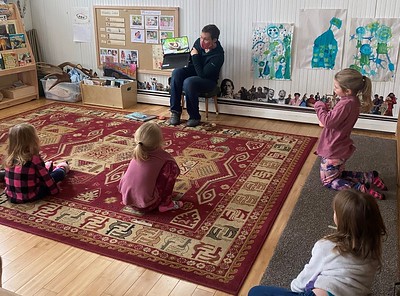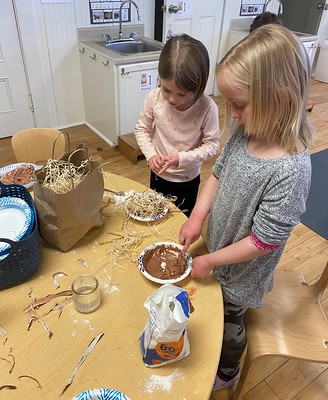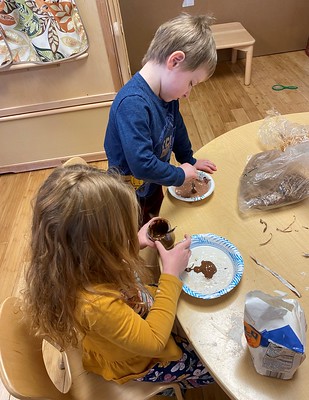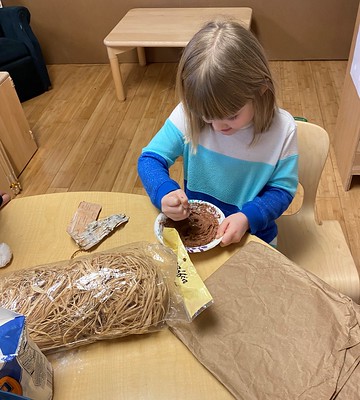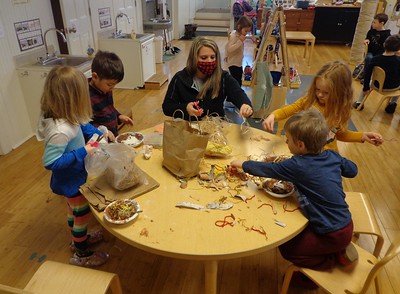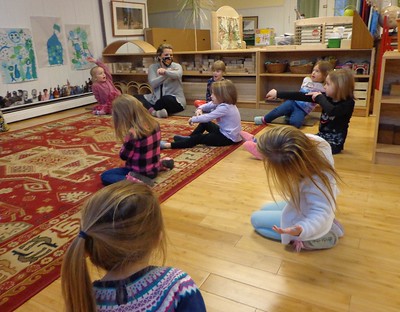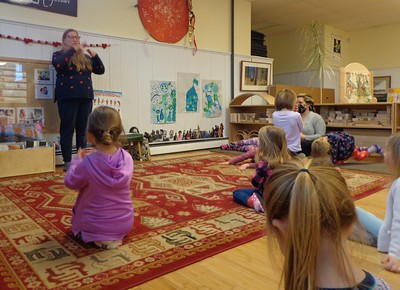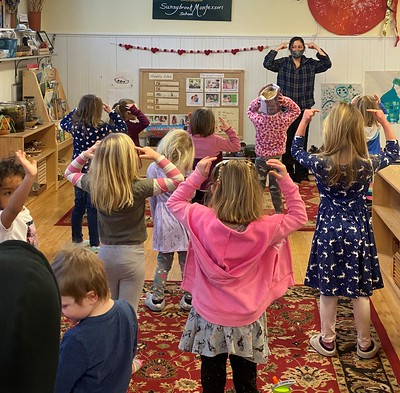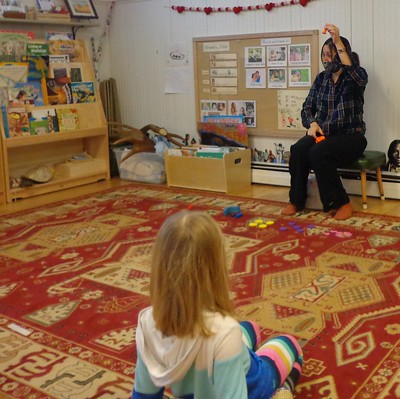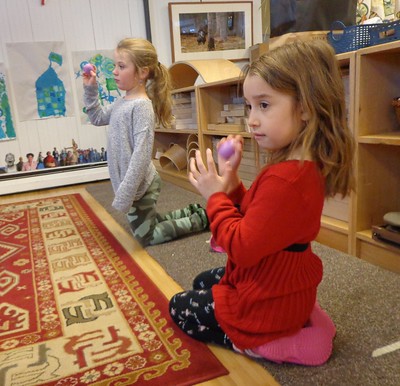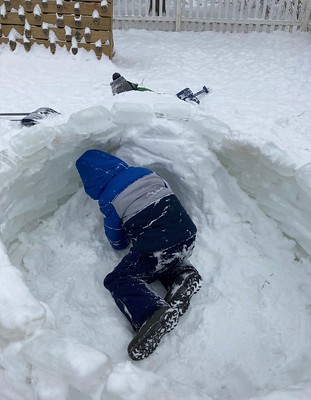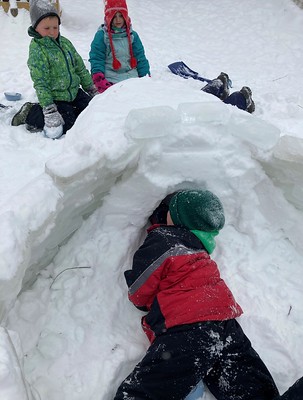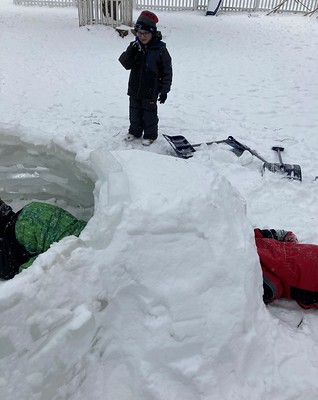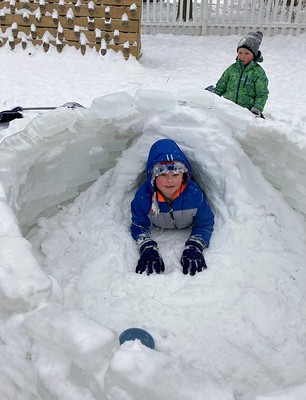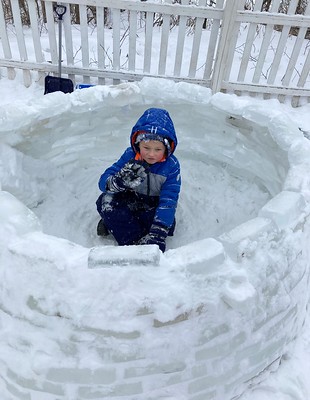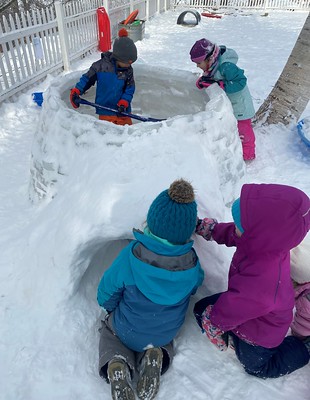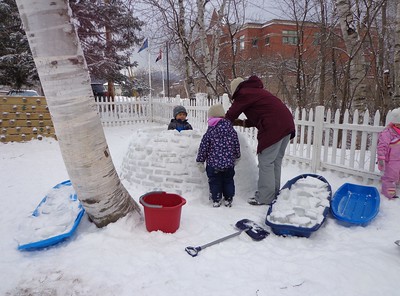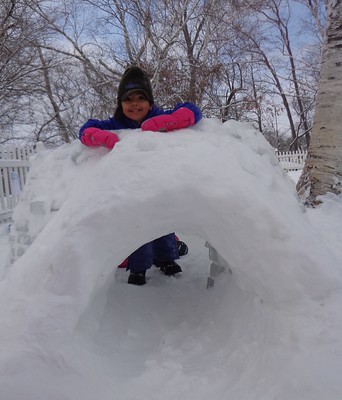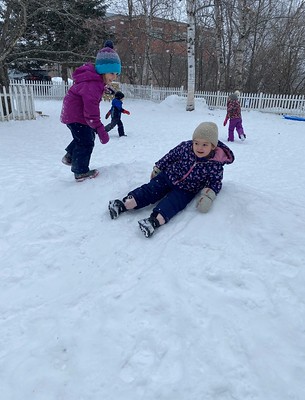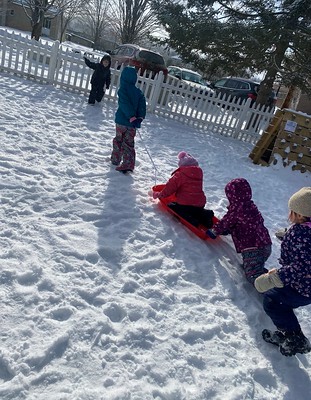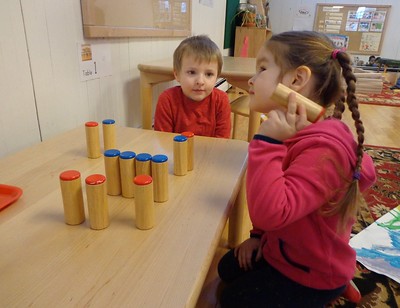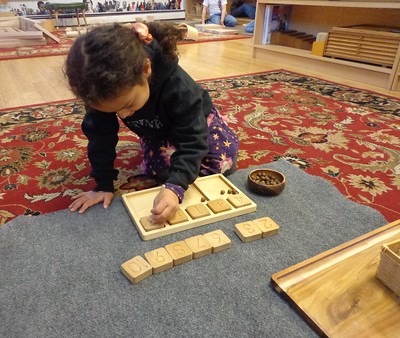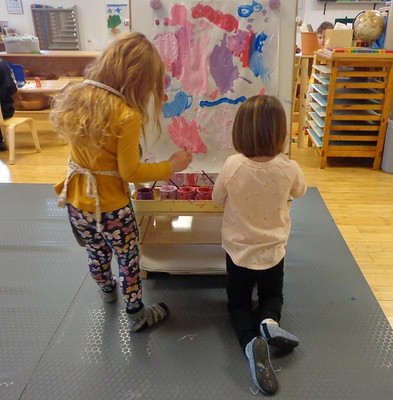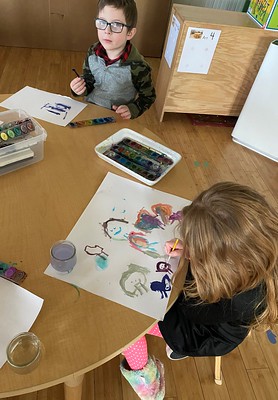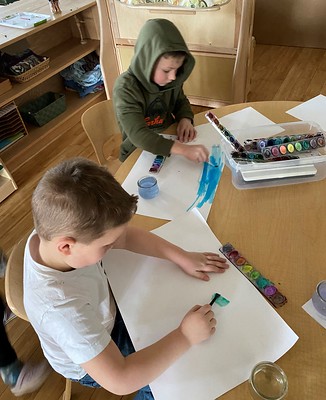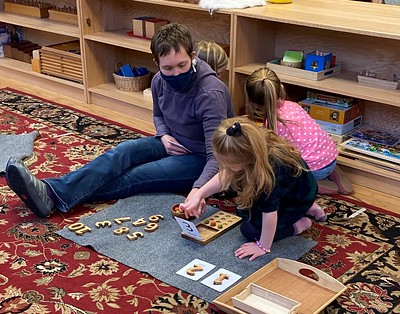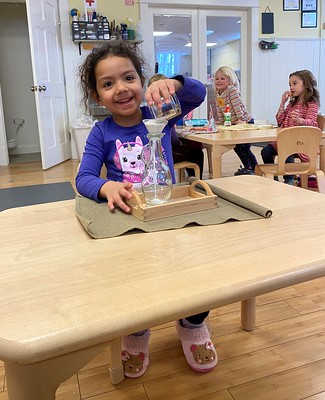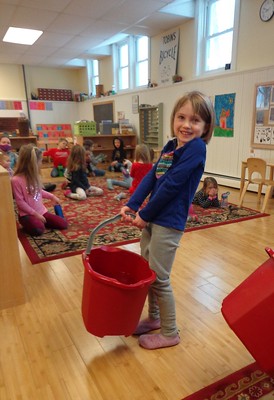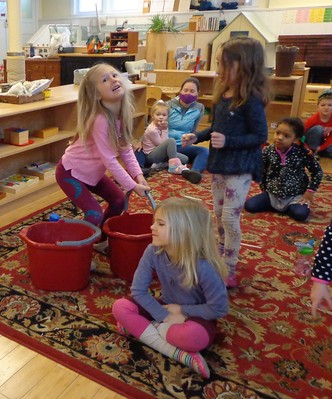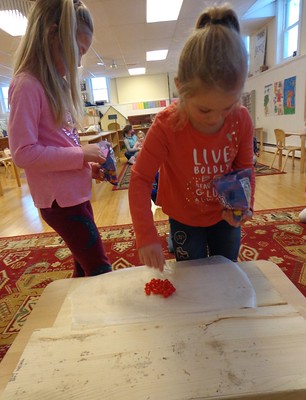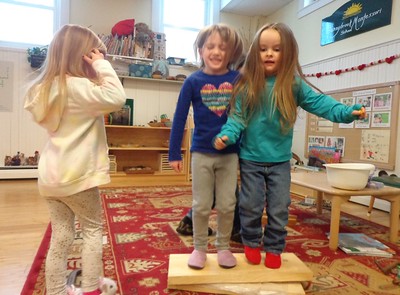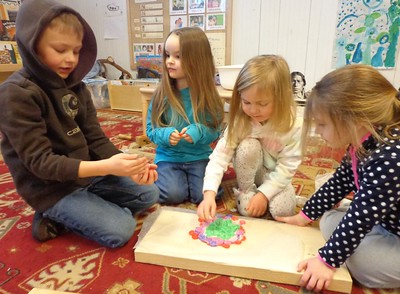For Valentines Day Monday students read about some friends in My Friend Rabbit by Eric Rohman then created hearts of many colors. They traced heart shapes then outlined them with black marker. They used tape to create lines and filled the open spaces with color using pastels, marker, or paint. Finally they pulled up the tape leaving spaces of color separated by white.
Children used heart punches to punch out large, medium, and small hearts then used them to create Valentine pictures and cards for friends and family. Some children threaded beads on an elastic to create friendship bracelets.
As we have been learning about how animals adapt to winter weather, we looked at ways that animals insulate against the cold. The children discussed how many animals grow thicker coats of fur and birds grow downy feathers. We discussed how sheep have nice thick wool to keep them warm in the winter, then farmers shear it off to cool them in the summer. We also talked about bears and whales that have layers of fat, or blubber, that keep them warm. We then examined some coyote and rabbit fur, some raw wool, wool mittens, and a wool hat, some goose down feathers, and some fat. We discussed the different ways we use these things to keep us warm in the winter, with our wool socks, hats, and mittens, down jackets, and how native peoples were very conscious to use every part of the animals hunted for not only food, but to make tools, clothing, including warm winter wear, fat for burning, etc. The children tested the various insulators by holding an ice cube in a bare hand and an ice cube on the feathers, fat, fur, or wool.
We began to learn about birds and how they stay warm in winter. The children noticed a robin last week while snowshoeing, which was surprising. We learned from Susan that migrating is a hard journey for robins, and they don’t migrate because of the cold, but the lack of food. If they are able to continue to find food, they may not migrate because the risk of the trip is so great. We created some bird feeders by coating cardboard rolls with peanut butter and rolling them in birdseed, then hung them in the tree. Next week we will create others using bundt pans and muffin tins.
Most birds live in nests that they build. We observed several nests and discussed what they were made with. The children noticed dried grasses, sticks, pine needles, hair, bark, and mud. We watched a timelapse video of a robin building a nest, bringing grasses and straw and sticks and mud, then packing it down and rounding it out with its’ feet and belly. We watched an engineer bird create an elaborate mud house, carrying the mud in its beak then placing it on the edge to build up the walls. We used some bark and various shredded wood and papers and some “mud” made from flour, water, and brown paint, to create our own bird nests.
During Sign language with Rose we reviewed all the animals then learned the signs for the colors. We learned red, pink, orange, yellow, green, blue, purple, black, gray, white, gold, and silver! Many of the colors are made in similar ways, by making the first letter in the name and shaking the hand back and forth. The children chose to sign and sing the “Elephants on a Spider’s Web” song before signing thank you to Rose.
Spanish with Zeanny kept us moving with Cabeza, Hombros, Piernes, Pies. She played a counting colors game, selecting volunteers to find a number of items of a particular color, which we then counted all together. We used the colored egg shakers to follow the directions and listened carefully while Zeanny tried to trick us. We finished up by reading the Spanish version of Sandra Boynton’s Moo, Baa, La La La, which is Muuu, Beee, Asi Fue! in Spanish.
Work on the igloo is almost complete! The children tunneled through the mound of snow to create the entrance, and began digging out the snow that has piled up inside on the floor. More layers of ice blocks have been added and it is now about shoulder height for most students!
Kindergarten students did sums of 8 with their cuisinaire rods and began to work on words that begin with J.
Friday students explored sedimentary rocks. They watched a brief video about the formation of sedimentary rocks from various materials, such as sand, dead plants, dead animal bones & shells, etc. We learned that sedimentary rocks form when sediment in the seas and oceans are compacted from the pressure of the water over thousands of year. We learned that coal is compacted dead plants, limestone is marine animal bones and shells, and sandstone is sand. We took turns lifting an empty bucket and a bucket of water to compare their weight and feel how heavy water is and how much pressure it can apply. Some children became the bottom layer of sedimentary rocks, which we added layers to then some water to push down and condense them. We then did an experiment with jellybeans. The children divided them by color, and we pressed them together between boards with clamps, then by standing on them, one layer at a time, until we created a jellybean sedimentary rock.

